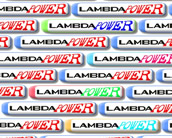 Page 13
Page 13
Diesel combustion phases
Referring to the diagrams, it can be seen the injection process can be split into three distinct phases.
Whilst the fuel is passing through the pipes on the way to the injector, it obviously is nowhere near its auto-ignition temperature. Once it is inside the cylinder, it takes a certain amount of time for the fuel to absorb enough heat to auto ignite.
Through a combination of air movement and fuel droplet movement, the heat is gradually transferred to the fuel. First vapourisation, then ignition will occur. Our first phase, before the ignition, is the 'delay period', illustrated in Figure 21. Once the fuel is hot enough it will ignite.

Figure 21 - PHASE 1 - The first phase of Diesel
combustion; fuel is heating up as it has entered the
chamber. Blue represents cool fuel, through to red
and orange for hot fuel
However, the fuel that got in the cylinder first will be hotter than the fuel just sent in. 'Hot spots' will thus develop and the mixture will ignite in several different places at different times. The overall point when these explosions start to happen gives a sudden and extreme rise in pressure. This is called "knock", and is highly undesirable in a petrol (gasoline) engine, where the opposing shock waves caused will stress the engine leading to component failure. This is illustrated in Figure 22.

Figure 22 - PHASE 2 - Some of the fuel has reached its
auto ignition temperature and is starting to burn.
'Diesel knock' is unavoidable, the opposing shock waves still happen, and this is the reason for the C.I. engine's distinctive noise. Rather than one progressive, smooth flame front that would be found in a spark ignition engine, Compression ignition can be thought of as consisting of many small explosions happening at different times until all the Oxygen is exhausted. Shock waves mean Diesel components have to be engineered to be stronger; this in turn lowers the maximum rev limit of a diesel engine due to the heavier masses involved with these stronger parts. As new and stronger engineering materials are developed this may become less of a problem.
The final stage of ignition only occurs during high engine load and full power output. This is where the combined influence of the higher cylinder temperature and the already advancing flame front in the cylinder combines to ignite the fuel immediately as it enters through the fuel injector. This is termed the "continuous burn" phase, but note this phase doesn't always exist, it depends on engine load.

Figure 23 - PHASE 3 - Direct burn - the chamber
is now very hot and the expanding gases are now pushing
the piston downwards.
It can be seen that most of the combustion would be expected to occur next to the injector; this cannot be allowed to happen for a couple of reasons.
Firstly, the distribution of fuel air mixture around the cylinder would then be poor, giving poor volumetric efficiency. Secondly, not enough oxygen will reach the fuel vapour - this will lead to incomplete burning, which causes carbon to be formed (soot).
Due to the angles of the inlet ports and other factors such as valve design and piston crown shape, the incoming air is given a high degree of rotary motion - termed 'swirl'. This high-speed rotating air breaks up the fuel and vapourises it more easily; this leads to good charge distribution but it is inescapable that some regions of fuel will have less oxygen available for complete combustion than others. It is this fact that causes diesel exhaust to be so sooty.
But there are solutions now available to solve this problem.

